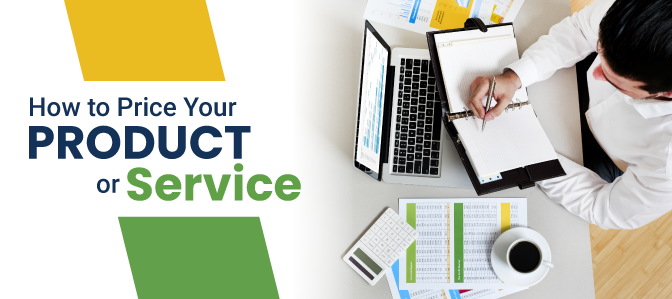How to Price Your Product or Service
A lot of thought should go into how you price the product or service you are offering to your consumers.
There are a few pricing techniques out there, finding the best one for your business takes strategic thinking as the pricing needs to be scalable.
Here are a few ways you can price your product:
Cost-Plus Pricing
This is simply calculating your costs on a product and adding a markup to that cost. This kind of pricing is lazy as it doesn’t really take much research in your market. It’s also risky in that it assumes that you will sell all units, which isn’t always the case. If you don’t sell all units, your profits are lower. It also doesn’t communicate any value to your customers. This may be a starting price point if you’re just getting started, but it’s certainly not a long-term pricing strategy.
Premium Pricing
Premium pricing is exactly what it sounds like, pricing your product at a premium compared to market standards. This can be effective if the quality of the product is correctly portrayed, and is best done at the beginning of a product life cycle as long as the product is unique.
For premium pricing to be effective, branding, packaging, the website, the product itself, and all other elements of your store must uphold the premium quality.
Except for in rare cases, premium pricing turns to price skimming, the strategy in which sales prices are high in the introductory phase and continue to decline as more competitors enter the market.
Economy Pricing
This is simply pricing products based on what similar products in the market are priced at, keeping the budget-conscious consumer in mind. This strategy is used by big retailers like Walmart or Target and is less effective for smaller businesses as the lower margins may be difficult to absorb the low profit without the sales volume bigger retailers have.
In economy pricing, because it’s budget-conscious, costs for marketing and production are kept low to keep the price to the consumer low.
Bundle Pricing
By providing more products or services for a lower rate in a bundle, the value of the product goes up in the eyes of the consumer. This could be an effective strategy for a small business as long as costs are somewhat low. This allows merchants to keep the high margin on the higher-value products they are selling and make up for the lower margins from the bundled products.
Value-Based Pricing
This kind of pricing is a little more in-depth as it requires research into your consumers, the current market, what benefits your product offers over competitors, and how well you communicate the value of your product.
A key to value-based pricing is making sure that you communicate the problem you solve for your customers. Don’t just advertise the product. It’s not the product that’s being sold, it’s the solution. The better you communicate that the more your value increases and therefore your pricing can potentially increase.
Value-based pricing is more of a long-term strategy as it can increase or decrease based on what the market is doing, which is more reliable than going off of your costs alone.
Beware
Pricing too high could negatively impact your market share, but pricing too low can make your product seem cheap or not capable of actually solving consumers’ problems. It’s key to do your research and find a balance.
Shopper Approved has some of the best pricing in the industry. However, at one point, we realized that it was too low, negatively impacting how potential customers saw us. Strange as it was, sales picked up again once we increased our pricing.
This goes to show that consumers, while many are price conscious, are more concerned with the value of the product they are purchasing. This mindset makes any of the above strategies plausible for different companies based on their target market, costs, and capabilities.

 Drive More Visibility, Traffic, and Sales
Drive More Visibility, Traffic, and Sales
